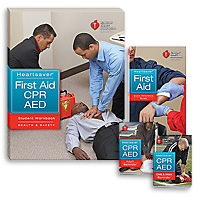CPR Training: Why can’t I just do it all online?
 Anyone can claim to have put together an online CPR course. Many have. If you just want to learn about CPR and First aid, and don’t need or care about a certification (or having your skills evaluated), that might work for you. And those courses may even follow the national CPR standards to the letter. But without a physical practice component, it’s all academic. Literally.
Anyone can claim to have put together an online CPR course. Many have. If you just want to learn about CPR and First aid, and don’t need or care about a certification (or having your skills evaluated), that might work for you. And those courses may even follow the national CPR standards to the letter. But without a physical practice component, it’s all academic. Literally.
With the advent of mass online learning opportunities (Coursera, the Khan Academy, iTunes U), where thousands of people participate in the same “class”, the models for net-based personal development have reached into many areas. Those searching online for CPR classes will invariably run into results touting a “Nationally Accredited Online CPR course” or providing a chance to “get your CPR certification today – no waiting”. They use phrases like “follows AHA guidelines” and “does not require hands-on training”. You can print out your own “certificate of completion” to take in to your employer or certification board. Sounds easy, right? An hour or so in the comfort of your own home, and you’re set for the next two years.
Except that your employer tells you that they don’t accept the certification from “Bob’s Online CPR Training” because it isn’t from the Red Cross or the American Heart Association. Or the board for your Massage Therapy license says that because your online CPR class didn’t include any hands-on training, they don’t accept it, and now you have to wait to work again until after you complete (and pay for) another class.
Avoid these situations by making sure your class is conducted through an established training agency, as with the American Heart Association. The AHA is an internationally respected source for high-quality CPR training, and has been instrumental in the development of CPR training standards. Just because a course claims to follow AHA guidelines does not mean that the student earns an American Heart Association certification.
Hands-on training is a vital component of a CPR class. AHA courses focus on providing students maximum practice time in their class sessions. CPR is a physical skill, and it takes physical practice to master it. Look at it this way – do Olympic skiers learn how to break records by watching other people ski online? Nope. They spend their time on the slopes, training for thousands of hours, until they become great. While the CPR classes at CPR Seattle don’t last quite that long, we do ensure that each student walks away from class confident, competent in their skills, and most importantly, able to perform CPR if necessary.
The American Heart Association does have available online components for CPR and First Aid training (see www.elearning.heart.org), but a certification card cannot be awarded for CPR or First Aid unless the student also passes an in-person skills evaluation session with a certified AHA instructor. This evaluation insures that the concepts and skills learned during the online training are understood and can be performed correctly. Agai n, this is vital to the certification process.
n, this is vital to the certification process.
Is CPR training really something that should be taken care of by the fastest and cheaperst provider? Always check before enrolling in a course to make sure the criteria discussed above are met. It will save you time, money, and quite possibly, save someone's life.
